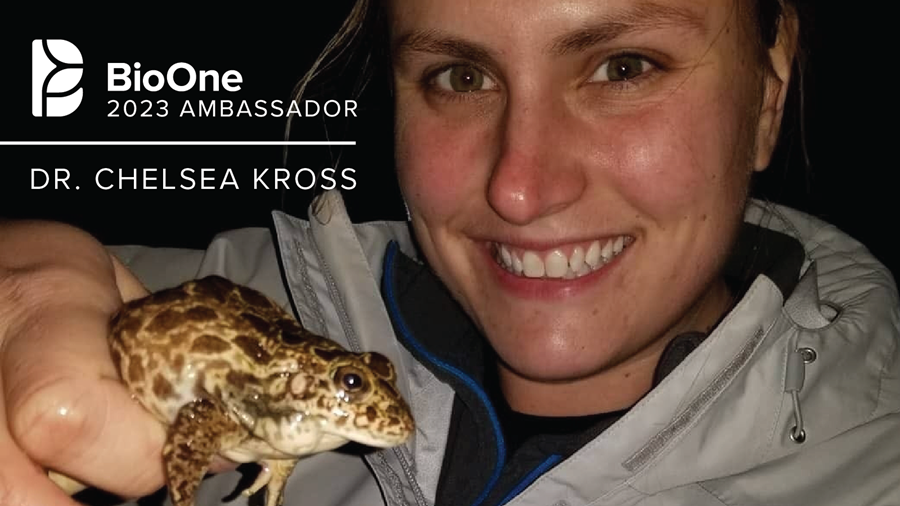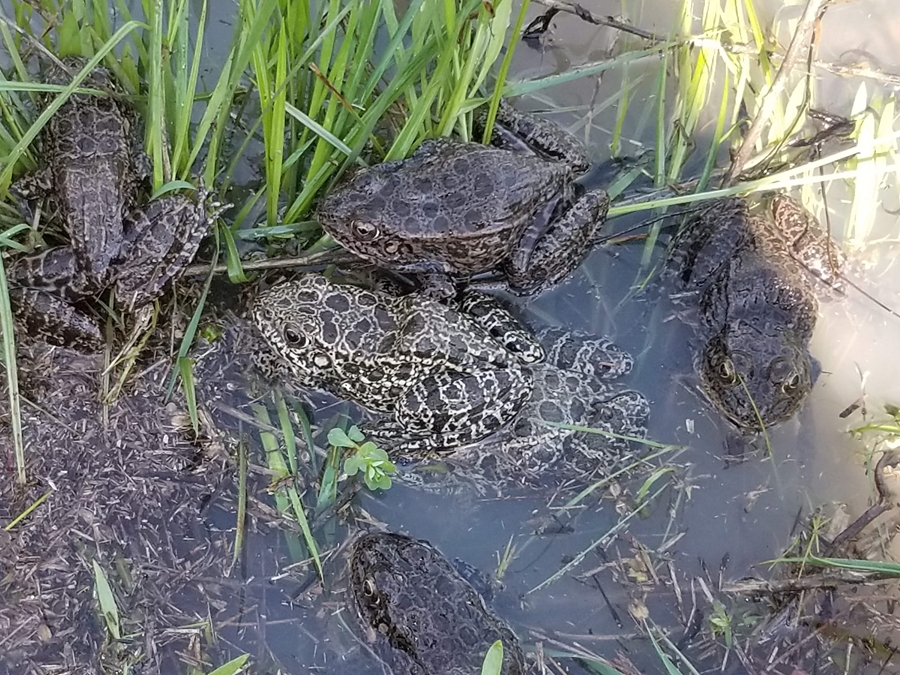
Chelsea Kross, a U of A alumna in biological sciences, earned a 2023 BioOne Ambassador award for her submission “Not all frogs can make it in the city: Using the landscape for targeted conservation,” which summarized research done while working toward her Ph.D.
The award recognizes early career researchers in biological, ecological and environmental sciences who demonstrate creative approaches to science communication.
“Communicating complex research is critically important to fostering public understanding and support for the sciences,” said Lauren Kane, president and CEO of BioOne. “The 2023 BioOne Ambassadors are not just accomplished researchers, but talented science communicators — ensuring the broadest possible understanding and impact of their work. We proudly celebrate their contributions.”
“It’s really exciting to be recognized for some of the hard work that I did during my Ph.D.,” Kross said. “And I am excited to have the opportunity to share my research with a wider audience.”
 Crawfish frogs |
Kross was nominated by the American Society of Ichthyologists and Herpetologists for her thesis excerpt, Population Decline and Landscape-Scale Occupancy of the Crawfish Frog (Lithobates areolatus) in Northwest Arkansas, published in Ichthyology & Herpetology, which was co-authored with J.D. Willson, an associate professor of biological sciences at the U of A. She adapted the excerpt for her BioOne submission.
Kross’ work details how growth in Northwest Arkansas, and its consequent destruction of habitat, has impacted the crawfish frog. Of the 13 states across the central United States where the crawfish frog was historically found, it’s in decline across 12 of those states and extinct in one (Iowa). Crawfish frogs are relatively unusual in that they don’t spend much time around wetlands, like most frogs, but rather hunker down in crawfish burrows, where they stay cool, damp and hidden from predators.
Kross and Willson studied 81 potential breeding sites across a range of terrains, including 16 known to have been former breeding grounds. On site, they listened for calling males and recorded factors that may affect population levels, such as proximity to human settlement. Overall, the researchers concluded that crawfish frogs had gone extinct at 40% of the known historical breeding sites as evidenced by absence of calls, though they found new populations in other, open canopy (meaning the treetops don’t touch), low-intensity agriculture habitats like pastures.
Counter to expectations, they discovered that the density of prairie mounds was a strong predictor of the presence of crawfish frogs, as well as other reptiles and amphibians. Since prairie mounds are relatively easy to spot, this will make future studies potentially easier to conduct.
Overall, the duo noted three results:
- Crawfish frogs are widespread throughout Northwest Arkansas but are threatened by the expanding human population.
- Detection probability is high under optimal conditions (cooler temperatures and recent rain).
- Prairie mound density is a useful indicator of habitat quality, likely reflecting minimal soil disturbance and the presence of crayfish burrows.
In a summary of her research, Kross noted, “Globally, temperate grasslands are the most endangered ecosystem with the highest risk of future biodiversity loss and amphibians are the most threatened vertebrate group, with over a third of all known species threatened with extinction.”
She added that while low-intensity agricultural settings can act as reservoirs for many open-canopy species, less mobile ones with specific habitat requirements, like crawfish frogs, are more likely to go extinct. If there is any good news, it’s that a better understanding of the significance of prairie mounds to the survival of crawfish frogs will make it easier to identify critical habitats for conservation and restoration efforts.
“We have a bunch of different remnant grassland habitats in Northwest Arkansas,” Kross explained, “and crawfish frogs are one of the species that depend on those habitats. So unlike the lesser prairie chicken and other prairie-associated species that are now gone and no longer in Northwest Arkansas, we still have the opportunity to save crawfish frogs.”
Kross is now a quantitative and applied ecologist working toward improving wetland management and conservation for a variety of wildlife, including waterbirds and amphibians. She is an assistant research scientist at Forbes Biological Station, which is part of the Illinois Natural History Survey, Prairie Research Institute and University of Illinois Urbana-Champaign.
BioOne is an open-source research aggregator in the biological, ecological and environmental sciences. BioOne ambassadors are nominated by BioOne publishing partners, and each winning author receives a $1,000 award and has their work promoted through BioOne’s multiple channels.
About the University of Arkansas: As Arkansas' flagship institution, the U of A provides an internationally competitive education in more than 200 academic programs. Founded in 1871, the U of A contributes more than $2.2 billion to Arkansas’ economy through the teaching of new knowledge and skills, entrepreneurship and job development, discovery through research and creative activity while also providing training for professional disciplines. The Carnegie Foundation classifies the U of A among the few U.S. colleges and universities with the highest level of research activity. U.S. News & World Report ranks the U of A among the top public universities in the nation. See how the U of A works to build a better world at Arkansas Research News.
Topics
Contacts
Chelsea Kross, quantitative ecologist at Forbes Biological Station
Prairie Research Institute, Illinois Natural History Survey
217-300-1078, ckross@illinois.edu
Hardin Young, assistant director of research communications
University Relations
479-575-6850,
hyoung@uark.edu